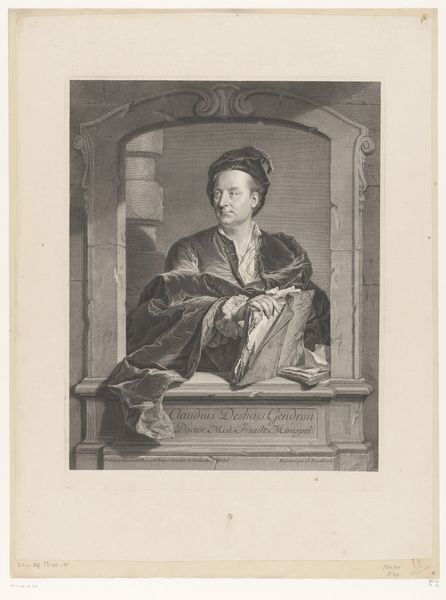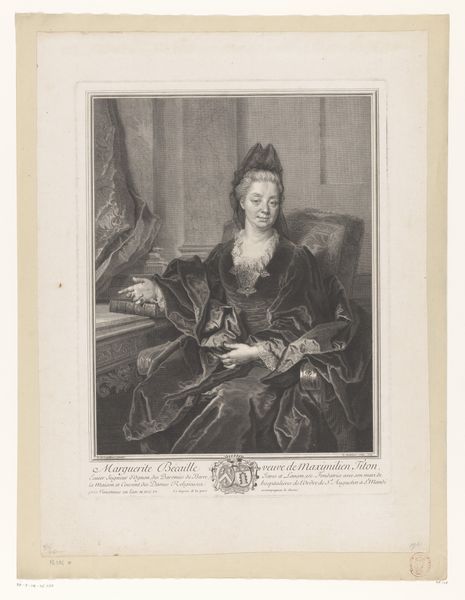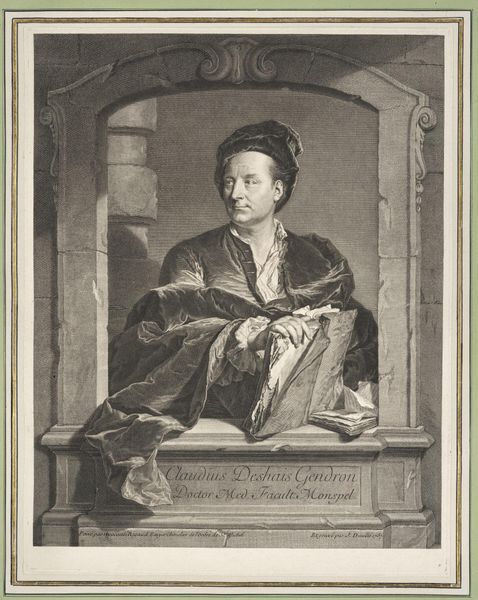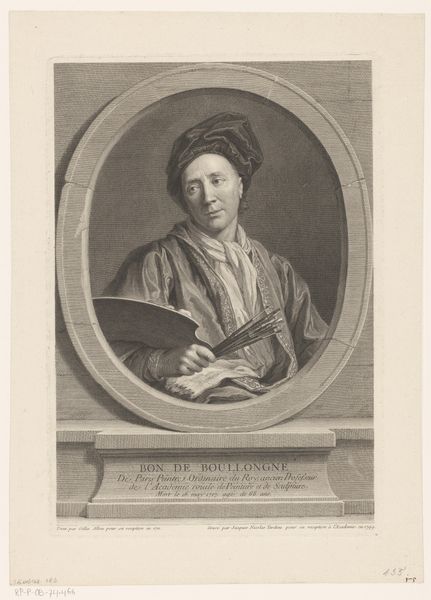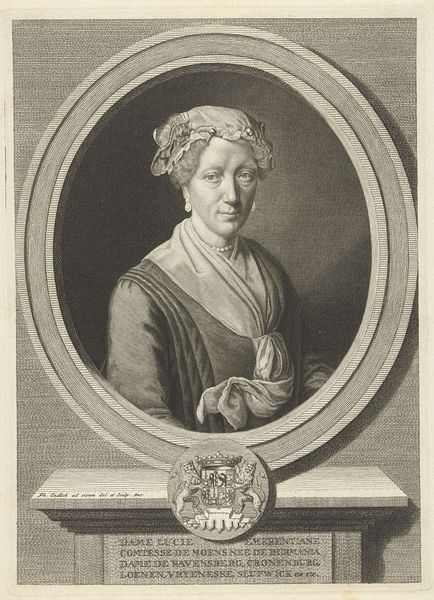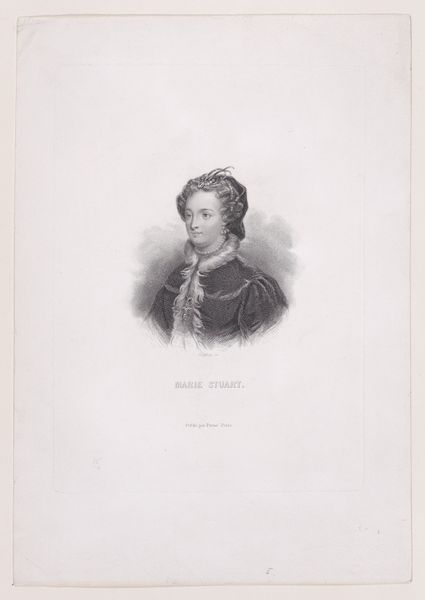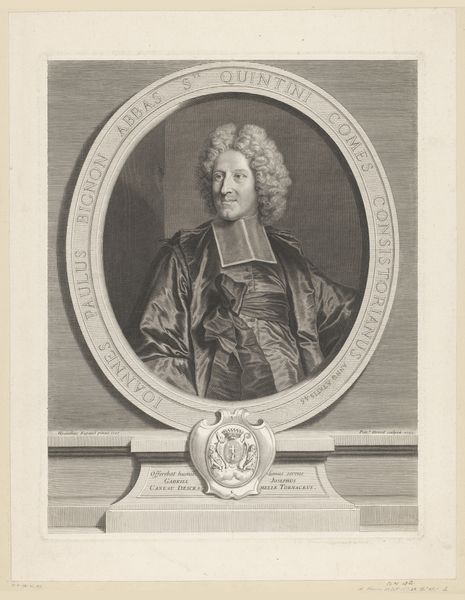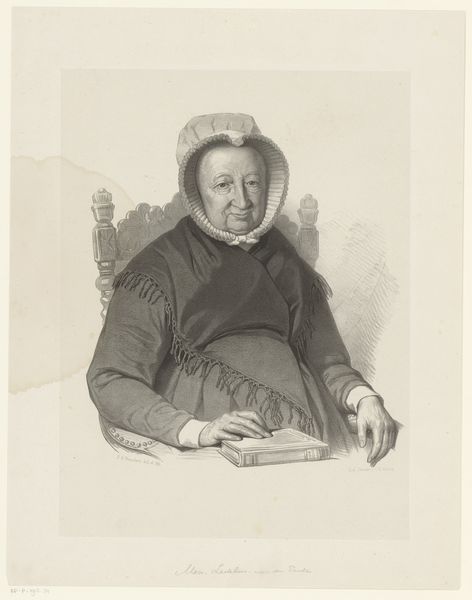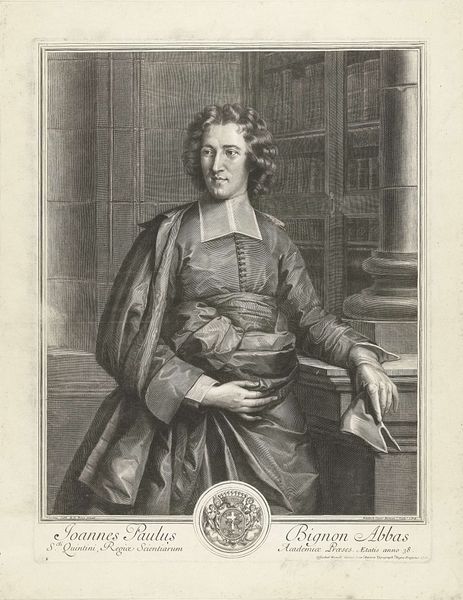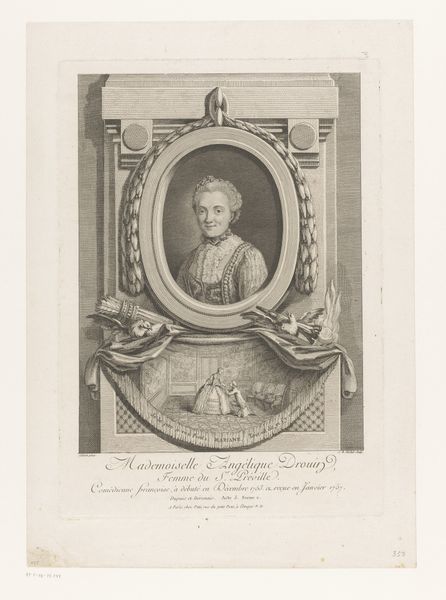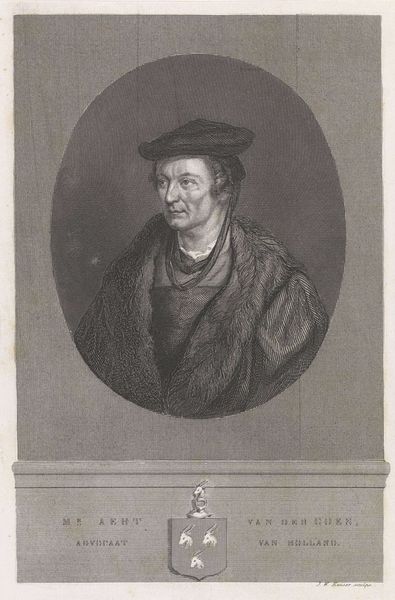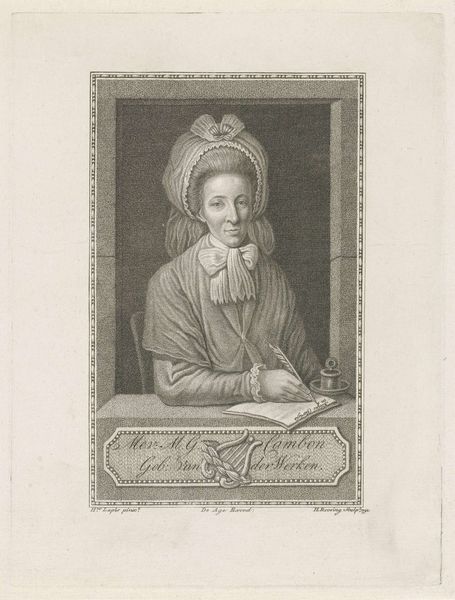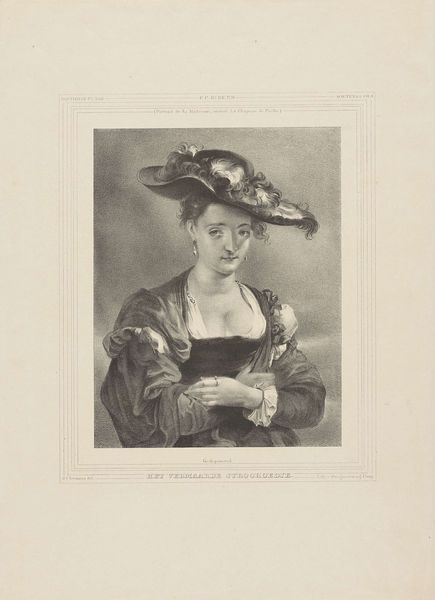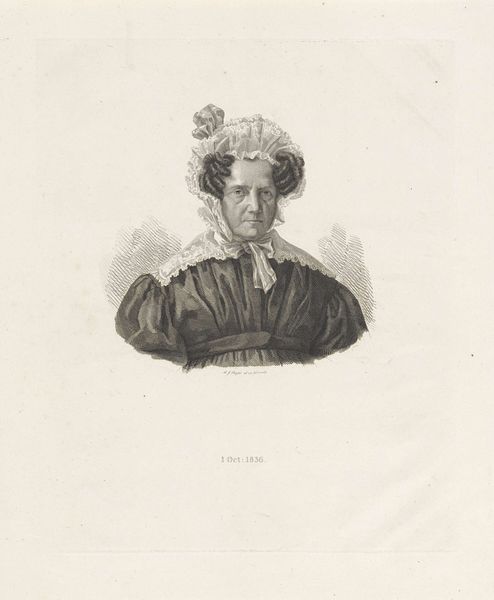
Dimensions: height 397 mm, width 265 mm
Copyright: Rijks Museum: Open Domain
Curator: This is a portrait of Johann Jakob Haid, created between 1766 and 1768, now residing here at the Rijksmuseum. It's an etching and engraving. Editor: Immediately, I'm struck by the stark contrasts, the almost severe formality of the composition. There’s a pronounced geometry at play, particularly in the sitter’s posture and the lines of the desk and canvas behind him. Curator: It's interesting to consider this portrait within the socio-political context of the 18th century. Haid was not only an artist but also an assessor, a figure of civic importance. How do you read his representation through that lens? Editor: The rendering is extraordinarily precise; there's a clarity that speaks to a certain kind of Enlightenment sensibility. I am particularly drawn to the exquisite handling of texture, note how the fabric of his coat contrasts with the crisp lines of his lace cuffs, or his hands with the table surface. The light seems almost surgically deployed, accentuating the geometry of the work overall. Curator: And perhaps that precision, that “clarity,” also reflects the artist's desire to portray Haid as a man of reason and accomplishment within a burgeoning printmaking industry in Europe. This wasn’t just about aesthetics; it was about establishing legacies. The act of portraying him with his instruments speaks to this idea of creating a cultural legacy of artistic achievement and status, reflective of a shifting social and political landscape. Editor: Do you believe that it is essential that it be about societal elements, though? Doesn't the masterful rendering of light, form, and texture constitute its primary significance? Even removed from its original context, the artistic value is clear, wouldn’t you say? Curator: It is certainly a sophisticated print, but its creation and reception cannot be divorced from its cultural environment, or from who had access to commissioning or buying prints. This wasn’t a universally accessible image, so the questions of representation and access are central. Editor: Indeed, very interesting perspectives, but what I admire most is the purely aesthetic qualities of the work. Curator: And I’m compelled by its connection to cultural production and societal narratives. It's through that interplay that art truly gains depth.
Comments
No comments
Be the first to comment and join the conversation on the ultimate creative platform.
